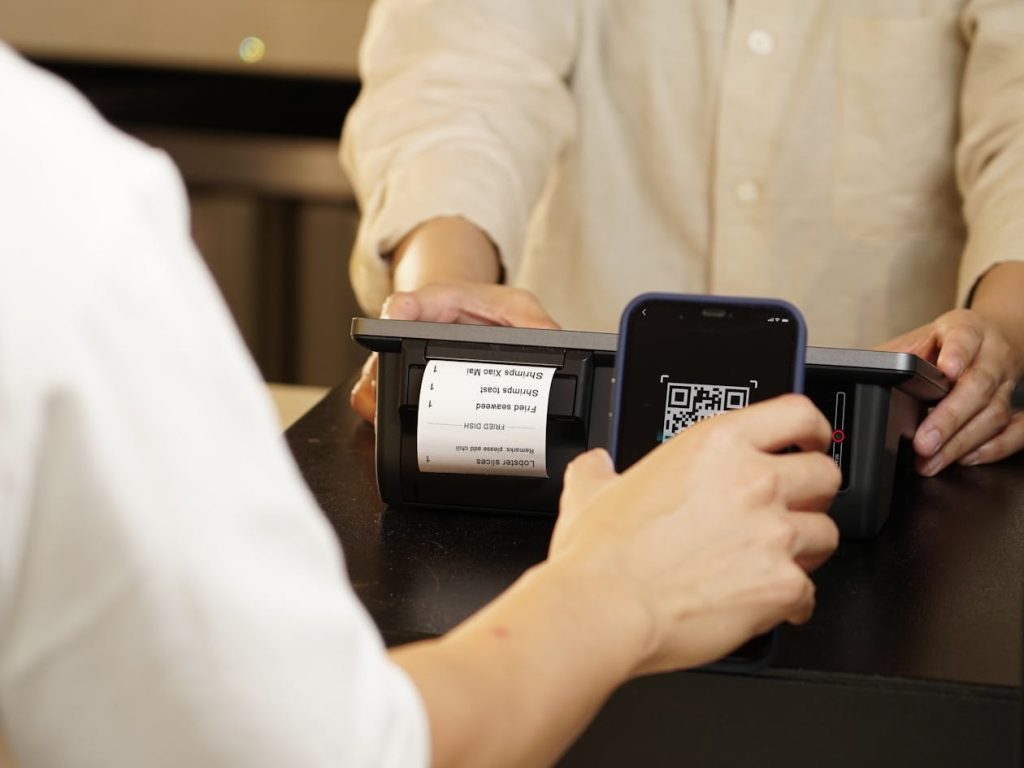“Starbucks Charged a Couple $4,500 for Two Coffees After They Selected ‘No Tip’
Last updated on
Jesse O’Dell walked into his neighborhood Starbucks in Tulsa on January 7, expecting nothing more than his usual morning routine. He ordered an iced Americano for his wife, Deedee, and treated himself to a venti caramel frappuccino. Two simple drinks for a family of six, starting another ordinary Tuesday.
What happened next would turn their financial world upside down and leave them questioning everything they thought they knew about a simple coffee purchase.
O’Dell walked away without checking his receipt, trusting that his $10 order had processed correctly. He had no idea that somewhere in the digital transaction maze, something had gone catastrophically wrong. His family was about to discover that even the most routine purchases can become expensive lessons in the dangers of modern payment technology.
Three days later, the coffee bill would reveal itself in the most embarrassing way possible.
Mall Meltdown Reveals Massive Mistake
Deedee O’Dell was shopping with her four children when reality hit. Standing at a store counter, she handed over the same credit card her husband had used for their coffee run. The card reader flashed red. Declined.
Confusion turned to panic as she checked her account balance. Where she expected to see routine charges, one entry made her heart skip: Starbucks – $4,456.27.
Mathematical impossibility had become a financial reality. Two cups of coffee had somehow cost more than most people’s monthly mortgage payment. Her family’s checking account had been drained by what should have been a $10 transaction.
Four confused children watched their mother try to process how their neighborhood coffee shop had just charged them enough money to buy a used car.
Breaking Down the Bill That Broke the Bank
Jesse O’Dell’s receipt told an impossible story. His base coffee order totaled the expected $10-12 range. But buried in the transaction details was a line item that defied logic: a $4,444.44 gratuity.
Someone or something had added a tip that represented 370 times the actual cost of their beverages. While most coffee shop tips range from $1 to $5, this phantom gratuity could have covered rent for several months.
The total charge of $4,456.27 represented the kind of money families save for vacations, emergency funds, or major purchases. Instead, it had vanished into the digital ether of a routine coffee transaction gone wrong.
What seemed like a simple setback for others turned into a financial catastrophe for a family with four children, straining their budget for weeks.
Customer Service Nightmare Begins

Jesse O’Dell contacted Starbucks immediately after discovering the astronomical charge. What followed was a customer service marathon that tested his patience and persistence.
“We contacted their customer service helpline probably 30 to 40 times that day,” O’Dell recalled, describing a frantic effort to reach someone who could reverse the transaction.
Representatives acknowledged the error and promised immediate action. Company officials assured him that refund checks would be mailed within days. After dozens of phone calls, the situation appeared headed toward resolution.
Starbucks’ customer service seemed cooperative, treating the incident as a straightforward billing error that could be quickly corrected. O’Dell felt confident that his family’s money would be restored and life could return to normal.
Bounced Checks Add Insult to Injury
Days later, two checks arrived from Starbucks corporate offices, totaling the gratuity amount that had been incorrectly charged. O’Dell drove to his bank, confident that the nightmare was finally ending.
The checks bounced.
What should have been the resolution became another chapter in an expanding customer service disaster. The promised compensation had proven worthless, leaving the family still thousands of dollars short while dealing with additional bank fees for the failed deposits.
Customer service representatives offered apologetic explanations about internal processing errors and promised replacement checks. O’Dell found himself back where he started, except now with bounced check fees added to his mounting frustration.
Family Vacation Becomes Casualty

Real-world consequences began cascading through the O’Dell family budget. Their planned family trip became an immediate casualty of the billing error.
“We had planned to take a trip but had to cancel and the tickets are non-refundable,” Jesse explained, watching vacation dreams evaporate along with their checking account balance.
Four children learned that their family getaway had been cancelled because of a coffee shop mistake. Non-refundable airline tickets represented additional financial losses beyond the original billing error.
Family memories were being sacrificed to a point-of-sale system malfunction that nobody could adequately explain or quickly resolve.
Blame Game Begins Over Big Bill
As media attention grew, conflicting explanations emerged about how two cups of coffee had generated a four-figure charge. Starbucks corporate communications painted a different picture than what O’Dell had been told by local management.
A company spokesperson claimed that Jesse had submitted the enormous tip himself during the ordering process. This contradicted O’Dell’s account of selecting the “no tip” option when prompted by the payment terminal.
O’Dell denied the accusation, pointing to his conversation with a district manager who had attributed the incident to a network technical issue. Someone was wrong, but determining who became impossible without access to internal system logs.
Trust between customer and company began eroding as explanations shifted from technical malfunction to user error.
Technical Glitch or Human Error?

Point-of-sale systems process millions of transactions daily, creating numerous opportunities for digital mishaps. Network connectivity issues can corrupt transaction data during transmission. Software glitches might multiply tip amounts by unintended factors.
Human error presents another possibility. Cashiers entering tip amounts manually could accidentally add extra digits. Touch screen interfaces might register multiple taps as separate entries. Training gaps could lead to incorrect transaction processing.
Restaurant industry technology creates vulnerabilities that most consumers never consider. Mobile payment apps, contactless cards, and integrated tip screens introduce complexity that can produce unexpected results.
Single-digit errors become massive problems when they involve decimal points, multipliers, or currency conversion calculations.
Police Report Filed as Frustration Mounts
Growing frustration with Starbucks’ handling of the situation prompted O’Dell to escalate beyond customer service channels. He filed a formal report with the Tulsa Police Department, creating an official record of the incident.
Police involvement suggested the seriousness of the financial impact on his family. While criminal fraud seemed unlikely, the report established a paper trail that could support future legal action if necessary.
Law enforcement documentation provided independent verification of the timeline and financial damages. O’Dell wanted official recognition that this wasn’t simply a customer service dispute but a significant financial hardship caused by corporate negligence.
Starbucks Responds to Growing Scrutiny

Faced with media attention and police reports, Starbucks corporate communications acknowledged the situation publicly. A spokesperson attributed the incident to “possible human error” without specifying whose error had occurred.
Company representatives admitted that their first refund checks had bounced due to an internal typo, an ironic mistake given the precision required for financial transactions. They claimed that replacement checks had been delivered and successfully cashed.
Starbucks maintained that they had remained in communication with the O’Dell family throughout the resolution process. However, the timeline suggested that media pressure had accelerated their response more than initial customer service efforts.
Digital Payment Pitfalls in Modern Retail
The O’Dell incident highlights vulnerabilities in modern payment systems that process billions of transactions annually. Mobile ordering apps handle everything from $5 coffee purchases to $500 grocery orders using identical processing logic.
Contactless payments reduce human oversight that might catch obvious errors. Customers tap cards or phones without seeing itemized charges until after transactions are complete. Receipt checking becomes an afterthought in the rush of modern commerce.
Consumer protection measures struggle to keep pace with payment technology advances. Credit card chargebacks can take weeks to process. Bank dispute procedures require extensive documentation that many consumers don’t maintain.
Single transactions can drain entire checking accounts before customers realize problems exist.
Industry Standards for Error Resolution

Major retailers typically resolve clear billing errors within 24-48 hours through automated reversal systems. Credit card companies can process emergency chargebacks for obvious merchant mistakes.
Bounced refund checks represent an unusual complication that suggests inadequate internal financial controls. Well-managed companies maintain dedicated accounts for customer refunds that prevent such embarrassing failures.
Industry best practices call for immediate credit reversals when merchants acknowledge processing errors. Customer trust depends on swift, reliable problem resolution rather than prolonged disputes about fault or responsibility.
Social Media Amplifies Customer Complaints
Local news coverage transformed an individual customer service problem into a viral social media story. Digital platforms gave the O’Dell family’s experience national reach and corporate accountability pressure.
Consumer complaints receive wider audiences through social sharing and news aggregation. Companies face increased scrutiny when customer service failures become public relations disasters.
Digital age dynamics force businesses to resolve problems quickly before negative coverage damages brand reputation. Social media activism can pressure corporate responses more effectively than traditional customer service escalation.
Lessons Learned from Latte Disaster
O’Dell’s experience offers practical lessons for both consumers and businesses navigating modern payment technology. Always check receipts immediately, especially for digital transactions where errors might not be obvious.
“This is something that has caused duress in our family and hopefully others don’t have to go through something like this,” O’Dell reflected, hoping his experience would help others avoid similar problems.
Businesses must invest in robust error detection systems and rapid resolution procedures. Customer service recovery can determine long-term brand loyalty more than preventing initial mistakes.
Financial institutions need better real-time fraud detection for obvious transaction anomalies. Payment processors should flag tip amounts that exceed reasonable percentages of base charges.
Most importantly, routine transactions require the same attention as major purchases. In the digital age, even coffee can cost thousands of dollars when technology fails and customer service systems break down.
The O’Dell family’s expensive lesson serves as a reminder that modern convenience comes with hidden risks that require constant vigilance from both consumers and the companies serving them.
Some of the links I post on this site are affiliate links. If you go through them to make a purchase, I will earn a small commission (at no additional cost to you). However, note that I’m recommending these products because of their quality and that I have good experience using them, not because of the commission to be made.

































 JOIN OVER
JOIN OVER
Comments